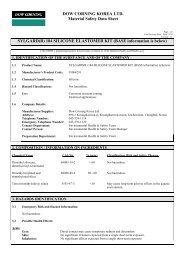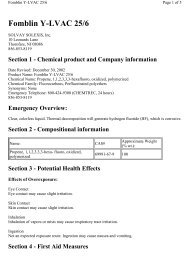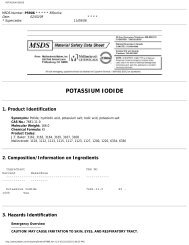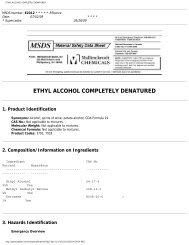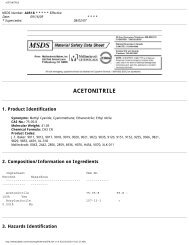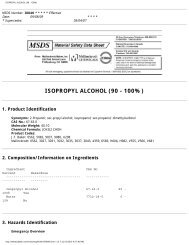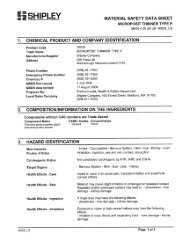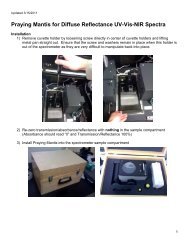ACETONE
ACETONE - Materials Characterization Facility
ACETONE - Materials Characterization Facility
- No tags were found...
Create successful ePaper yourself
Turn your PDF publications into a flip-book with our unique Google optimized e-Paper software.
<strong>ACETONE</strong><br />
DANGER! EXTREMELY FLAMMABLE LIQUID AND VAPOR. VAPOR MAY CAUSE FLASH FIRE.<br />
HARMFUL IF SWALLOWED OR INHALED. CAUSES IRRITATION TO SKIN, EYES AND<br />
RESPIRATORY TRACT. AFFECTS CENTRAL NERVOUS SYSTEM.<br />
SAF-T-DATA (tm) Ratings (Provided here for your convenience)<br />
-----------------------------------------------------------------------------------------------------------<br />
Health Rating: 2 - Moderate<br />
Flammability Rating: 3 - Severe (Flammable)<br />
Reactivity Rating: 0 - None<br />
Contact Rating: 3 - Severe<br />
Lab Protective Equip: GOGGLES & SHIELD; LAB COAT & APRON; VENT HOOD; PROPER GLOVES; CLASS<br />
B EXTINGUISHER<br />
Storage Color Code: Red (Flammable)<br />
-----------------------------------------------------------------------------------------------------------<br />
Potential Health Effects<br />
----------------------------------<br />
Inhalation:<br />
Inhalation of vapors irritates the respiratory tract. May cause coughing, dizziness, dullness, and headache.<br />
Higher concentrations can produce central nervous system depression, narcosis, and unconsciousness.<br />
Ingestion:<br />
Swallowing small amounts is not likely to produce harmful effects. Ingestion of larger amounts may<br />
produce abdominal pain, nausea and vomiting. Aspiration into lungs can produce severe lung damage and is<br />
a medical emergency. Other symptoms are expected to parallel inhalation.<br />
Skin Contact:<br />
Irritating due to defatting action on skin. Causes redness, pain, drying and cracking of the skin.<br />
Eye Contact:<br />
Vapors are irritating to the eyes. Splashes may cause severe irritation, with stinging, tearing, redness and pain.<br />
Chronic Exposure:<br />
Prolonged or repeated skin contact may produce severe irritation or dermatitis.<br />
Aggravation of Pre-existing Conditions:<br />
Use of alcoholic beverages enhances toxic effects. Exposure may increase the toxic potential of<br />
chlorinated hydrocarbons, such as chloroform, trichloroethane.<br />
4. First Aid Measures<br />
Inhalation:<br />
Remove to fresh air. If not breathing, give artificial respiration. If breathing is difficult, give oxygen. Get<br />
medical attention.<br />
Ingestion:<br />
Aspiration hazard. If swallowed, vomiting may occur spontaneously, but DO NOT INDUCE. If vomiting occurs,<br />
keep head below hips to prevent aspiration into lungs. Never give anything by mouth to an unconscious<br />
person. Call a physician immediately.<br />
Skin Contact:<br />
Immediately flush skin with plenty of water for at least 15 minutes. Remove contaminated clothing and shoes.<br />
Get medical attention. Wash clothing before reuse. Thoroughly clean shoes before reuse.<br />
Eye Contact:<br />
Immediately flush eyes with plenty of water for at least 15 minutes, lifting upper and lower eyelids<br />
occasionally. Get medical attention.<br />
5. Fire Fighting Measures<br />
Fire:<br />
http://www.jtbaker.com/msds/englishhtml/a0446.htm (2 of 7) [2/12/2010 4:58:16 PM]



